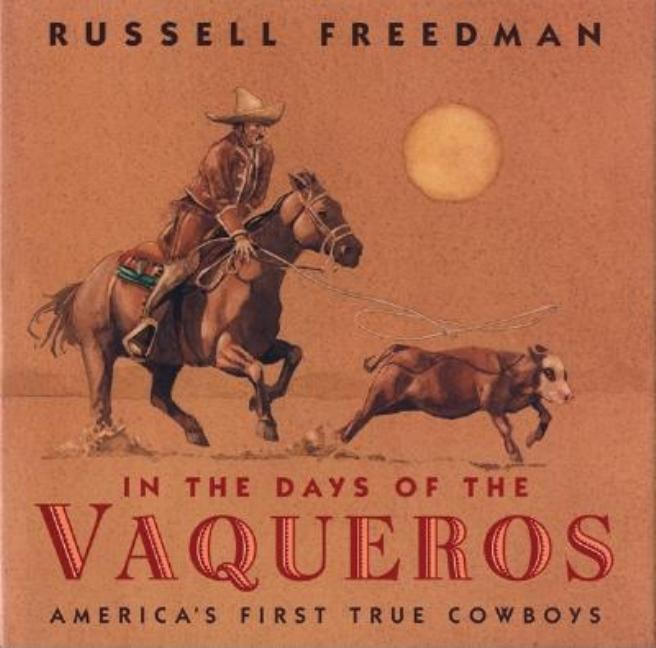Book Descriptions
for In the Days of the Vaqueros by Russell Freedman
From Cooperative Children's Book Center (CCBC)
Before cowboys roamed the ranges of the West, and before they occupied the imaginations of countless writers, filmmakers, artists, and children, vaqueros in Mexico were perfecting the skills that we typically associate with cowboys: riding, roping, herding, branding. From the 16thcentury, the Spanish conquerors of Mexico forced the Mexican Indians to work on their haciendas, caring for the large herds of cattle. These vaqueros became skilled riders and ropers, and inventive creators of special saddles, clothing, and techniques that would later be thought of as the trademarks of the American cowboy, such as chaps, spurs, and roping with lariats (lassos). Even the cowboy hat is a descendent of the sombrero. But vaqueros were viewed as servants in Mexico, while the “independent” cowboy who later emerged in this country became a romantic icon. This, author Russell Freedman notes, is perhaps the biggest reason why vaqueros have remained almost invisible in mainstream history. In sparkling prose, Freedman documents the history of the vaqueros and their legacy, providing unique information in a volume illustrated with period paintings, drawings, and photographs. (Ages 10–14)
CCBC Choices 2002 . © Cooperative Children's Book Center, Univ. of Wisconsin - Madison, 2002. Used with permission.
From the Publisher
In this rousing account of the first true cowboys, Newbery Medalist Russell Freedman brings to life the days when the vaqueros rounded up cattle, brought down steers, and tamed wild broncos. In the service of wealthy Spanish conquistadors in the sixteenth century, Mexican ranch hands began herd- ing cattle, often riding barefoot. They soon developed and perfected the skills for this dangerous work and became expert horsemen. Hundred of years later the vaqueros shared their expertise with the inexperienced cowboys of the American West, who adopted their techniques and their distinctive clothing, tools, and even lingo. Yet today it is the cowboy whom we remember, while the vaquero has all but disappeared from history.
The vaqueros are at last given their due in this dramatic narrative, lushly illustrated with beautiful period paintings and drawings.
The vaqueros are at last given their due in this dramatic narrative, lushly illustrated with beautiful period paintings and drawings.
Publisher description retrieved from Google Books.


